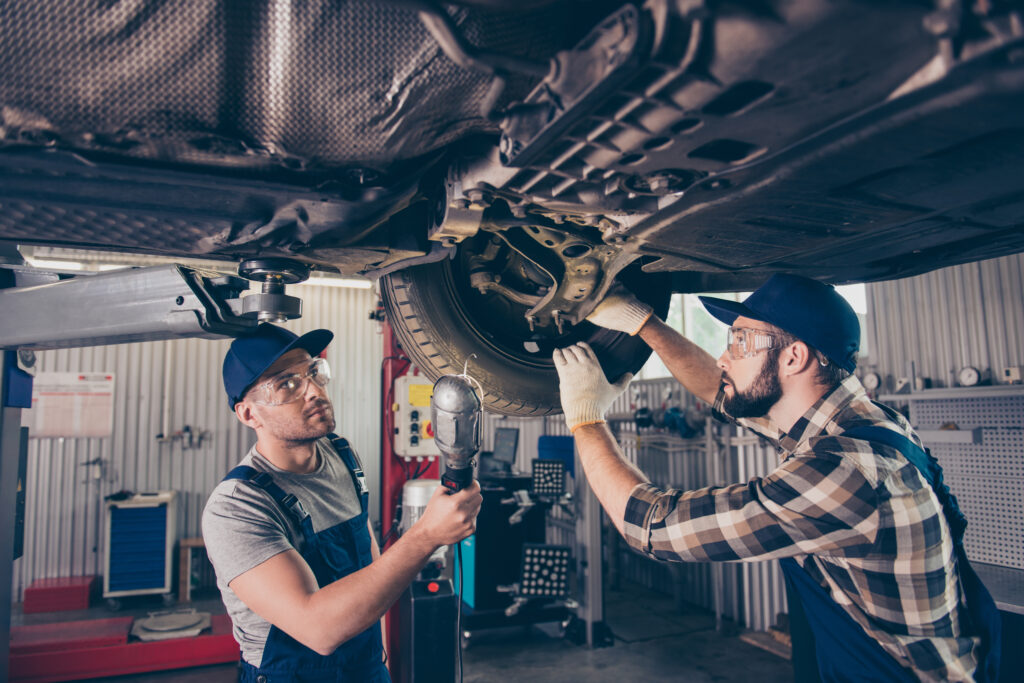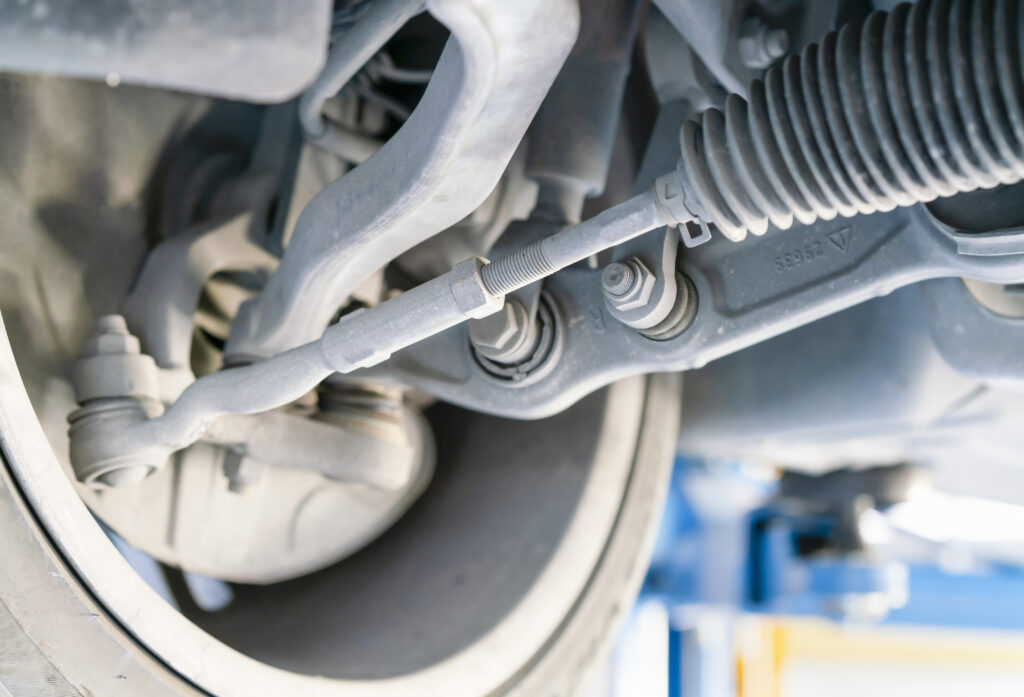Typical malfunctions of a steering system
Steering system is the centre of controlling a vehicle, thanks to which the driver is able to keep the correct direction of driving. Modern steering systems support the driver in driving and parking a car. But at the same time, they can be a subject of a malfunction. Steering system malfunctions are really dangerous for the safety of driver and passengers, as well as for all other participants of traffic. That is why each and every driver should know how to detect such a malfunction.
Steering system has several tasks to do. Thanks to the system, a driver is able to control a vehicle and react quickly to any threats that may appear on the road. Speaking technically: steering system changes the angles of wheel rotation surface in relation to the body of a car. For several years now, also comfort of drivers has been much important, so that not too much of power is needed to turn the steering wheel. Steering system is built in line with the latest solutions in active and passive safety.

Modern steering system can be divided into several parts.
The first one is a steering column and steering shaft (often with multiple U-joints), composing a steering mechanism. Its main task is to transfer the movements of a steering wheel to the knuckle.
And the knuckle itself is yet another element of a steering system. Steering knuckle consists of: steering lever, steering arm, tie rods and tie rod ends. The task of a steering rack is reacting to the movements of a steering wheel and turning the wheels appropriately.
The third part of a steering system is a power steering system. Thanks to the system, the driver does not have to use much force to be able to steer the wheels and manoeuvre the car. First and the oldest solution was a hydraulic power steering system. Its heart was a hydraulic master cylinder, powered with a multi-V belt.
Hydraulic power steering has later been replaced with electro-hydraulic one. A master cylinder with electric drive is used in this solution, working only when the steering wheel is turning. Such a solution allowed for substantial reduction of the load on the engine and on the master cylinder. Both solutions were based on a working agent - power steering fluid (hydraulic oil). At the moment a very popular solution is electric power steering. In this case the power steering system is in one block, takes up not much space and does not require using fluid.
Over the years, also steering wheels have changed - the most important elements of a steering system, with which a driver has direct contact. For many years we have seen air bags assembled in them. And lately, multifunctional steering wheels have become more and more popular. Meaning such, with control buttons for various equipment of a car (e.g. audio system).
Why do we experience malfunctions of a steering system?
Steering system is prone to various forces when driving. Elements and components of the system are a subject of wear and tear. Material can age, especially in case of rubber. Individual elements have their material and mechanical endurance. A malfunction resulting from servicing errors are also possible.
Steering system requires regular servicing. Its scope depends on the construction of a particular system. Each and every car requires regular inspection of toe-in.
Typical symptoms of steering system malfunctions
Malfunctions of steering system are very dangerous for the safety of driving. They may be a reason of very serious accidents. Not with no reason, during annual technical inspections, diagnosticians pay special attention to the steering system.
What is one to pay special attention to? Extensive free-play one can feel on the steering wheel, difficulty turning steering wheel, problems with turning wheels to the sides, clogging or total loss of power steering, noises from the steering system, noises from wheels, in hydraulic systems noise of master cylinder, uneven tyre tread wear - these are the most common problems. They must be diagnosed as soon as possible and eliminated.
Typical malfunctions of a steering system - the most popular ones

Wear and tear of tie rod ends can be recognized by a series of noises, coming from under the engine bonnet. Even when car is not in a move. Used up tie rod ends are also the cause of vibrations that can be felt on the steering wheel.
The most often symptom is free play that can be felt, causing the car reacting really slowly to any small movements of the steering wheel. Tie rod ends can be used up as a result of standard use of a car. Their wear and tear can also result from other parts of suspension being damaged. They can also be affected by careless driving onto high curbs.
The second, most often diagnosed problem, is incorrect toe-in of wheels. Problem with proper wheel alignment and toe-in can appear even after first time one drives into a hole in the road. Symptoms of incorrectly adjusted wheel alignment are pulling a car to one side, the need of constant correction of driving direction, slow reaction to steering wheel movements and also uneven tyre tread wear.
In older cars there is also a possibility of having problems with used up wheel knuckles, which are victims of corrosion.
A much often malfunction is worn wheel bearings. Symptoms that are most often are noises with various intensity - buzzing, friction, rubbing, metallic noise, hum, rattling, etc. This is a very dangerous malfunction which has to be repaired as soon as possible. In case of some cars, new bearings are being pressed into the wheel hubs. There are also other technical solutions. E.g. in some more modern cars, there might be hubs with bearings which are not changeable. The whole element has to be replaced.
Malfunction of a steering gear, commonly called steering rack, is also quite common and unfortunately expensive problem. Symptoms of a steering rack malfunction are jamming of a steering wheel, unnaturally large free play when turning a steering wheel, and also various types of noises appearing at turning a steering wheel. There are multiple reasons of damaging a steering gear. This might be wear and tear caused by intense operation of a car, leak of grease, water getting into the rack and corrosion, wear and tear of sleeves, damage to ball joints, clogging oil ducts etc.

Malfunctions of a steering system are a problem, which does not stop the car from going, but many unexperienced drivers may be surprised with the force needed to be put on the steering wheel when driving. Lack of feeling the car and possible panic may lead to a road accident. Typical symptoms of power steering system malfunction are the need of putting a lot of force on the steering wheel of a car, vanishing power steering (jamming), noise (buzzing) of master cylinder in hydraulic systems and a warning light turned on, on the dashboard. There are multiple causes of the power steering system malfunctions. These might be lack of power steering fluid in the system, leaks from the system, failure of the master cylinder or drive belt.
In electric power steering systems, a blown fuse may be the cause of a malfunction, but also control wire harness, overheating of the system, resulting from intense manoeuvring when parking, or malfunction of one of the sensors.
Typical malfunctions of a steering system may happen in any car. One should repair them as soon as possible to avoid an accident.